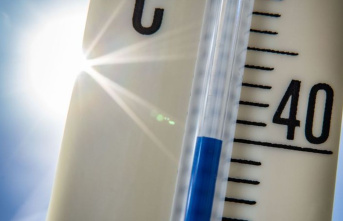Camp Lejeune's water supply contamination has left a profound impact on the health of military personnel, their families, and civilians stationed at the base. This environmental disaster, stemming from toxic chemicals seeping into the water sources, has led to a myriad of health issues.
Yet, diagnosing and treating Camp Lejeune-related illnesses presents a complex and multifaceted challenge.
In this article, we will discuss the multifaceted challenges faced in accurately diagnosing and effectively treating illnesses related to Camp Lejeune's contaminated water.
Lack of Awareness Among Healthcare Providers
Despite the extensively documented link between Camp Lejeune's contaminated water and severe health issues, numerous medical professionals remain unaware. This lack of knowledge poses challenges for patients, as symptoms often overlap with conditions associated with the contamination.
Additionally, specific neurobehavioral effects such as confusion, memory loss, and difficulty concentrating, unique to those exposed, further complicate the diagnostic process.
Raising awareness about the symptoms of Camp Lejeune water contamination among both medical practitioners and the general public is crucial. This effort ensures timely diagnosis and appropriate medical intervention for those impacted by this environmental catastrophe.
Delayed Development of the Symptoms
Camp Lejeune-related illnesses might not become evident until several years after exposure to the contaminated water. This creates significant challenges in establishing a connection between health problems and past contamination.
For instance, Camp Lejeune's toxic water has been linked to various birth defects. It includes neural tube defects, oral cleft defects, congenital heart diseases, and immune system disorders. Some of these conditions, especially immune system disorders, may remain dormant, with symptoms emerging later in life.
Camp Lejeune Claims Center notes that this adds complexity to the diagnostic process, as these health issues might seem unrelated to the initial exposure. The situation is further complicated by the fact that symptoms in pregnant women, infants, and young children often go unnoticed during the early stages.
Only as these affected children grew older did alarming rates of health problems become apparent, connecting them to their early exposure.
The Complex Nature of the Diseases
The complexity of diseases linked to exposure to Camp Lejeune contaminated water poses significant challenges in both diagnosis and treatment. Many of these diseases have multiple potential causes, making it difficult to establish a clear and direct link between exposure and illness.
Jurist reports that the equipoise standard has been adopted to deal with these challenges, deviating from the traditional burden of proof in tort cases. Historically, this standard was utilized in tests related to Camp Lejeune illnesses conducted by the Agency for Toxic Substances and Disease Registry (ATSDR).
The Camp Lejeune Justice Act (CLJA) incorporates the equipoise standard. It requires victims to present evidence demonstrating that the connection between their exposure and resulting harm is as likely as not a causal relationship.
This distinctive burden of proof recognizes the intricate nature of these illnesses, which often involve various contributing factors beyond water contamination.
Limited Treatment Options
Many Camp Lejeune-related illnesses lack definitive cures, posing a considerable challenge for patients and healthcare providers. Treatment options primarily revolve around symptom management and enhancing patients' quality of life.
With no curative measures available, medical professionals focus on alleviating symptoms, offering supportive care, and improving overall well-being. This limitation underscores the chronic nature of these illnesses, necessitating a long-term, multidisciplinary approach to healthcare.
Patients often require ongoing medical support and interventions tailored to address specific symptoms, emphasizing the importance of comprehensive, patient-centered care.
Legal and Compensation Challenges
Seeking compensation for Camp Lejeune-related illnesses entails navigating complex legal battles and the intricacies of filing claims. Both of which present significant hurdles.
The Carolina Journal notes that the Veterans Affairs (V.A.) doctors responsible for assessing claims related to Camp Lejeune's contaminated water have received insufficient training. This lack of specialized knowledge has resulted in the mishandling of a significant number of claims, impacting over 21,000 veterans.
A disconcerting 40% of these claims were mishandled, compounding the challenges faced by the affected individuals. The V.A.'s approach to these claims has been marked by widespread denials, with 17,200 out of the 57,500 claims filed since 2017 being outright rejected.
Furthermore, incorrect date assignments led to the denial of approximately $14 million in retroactive payments for 2,300 veterans.
According to TorHoerman Law, these legal and compensation challenges underscore the pressing need for reform and improved support systems. The existing system's flaws have left many without the crucial support they require, adding a layer of hardship to their already burdensome health issues.
Final Thoughts
The article highlights the need for ongoing advocacy and reform to ensure that the individuals impacted by the contamination receive the care they deserve. It is a call to action to prioritize the well-being of those who have suffered the consequences of environmental contamination.
The discussion reminds us of the importance of timely diagnosis, comprehensive care, and legal justice in the face of complex and challenging circumstances.










